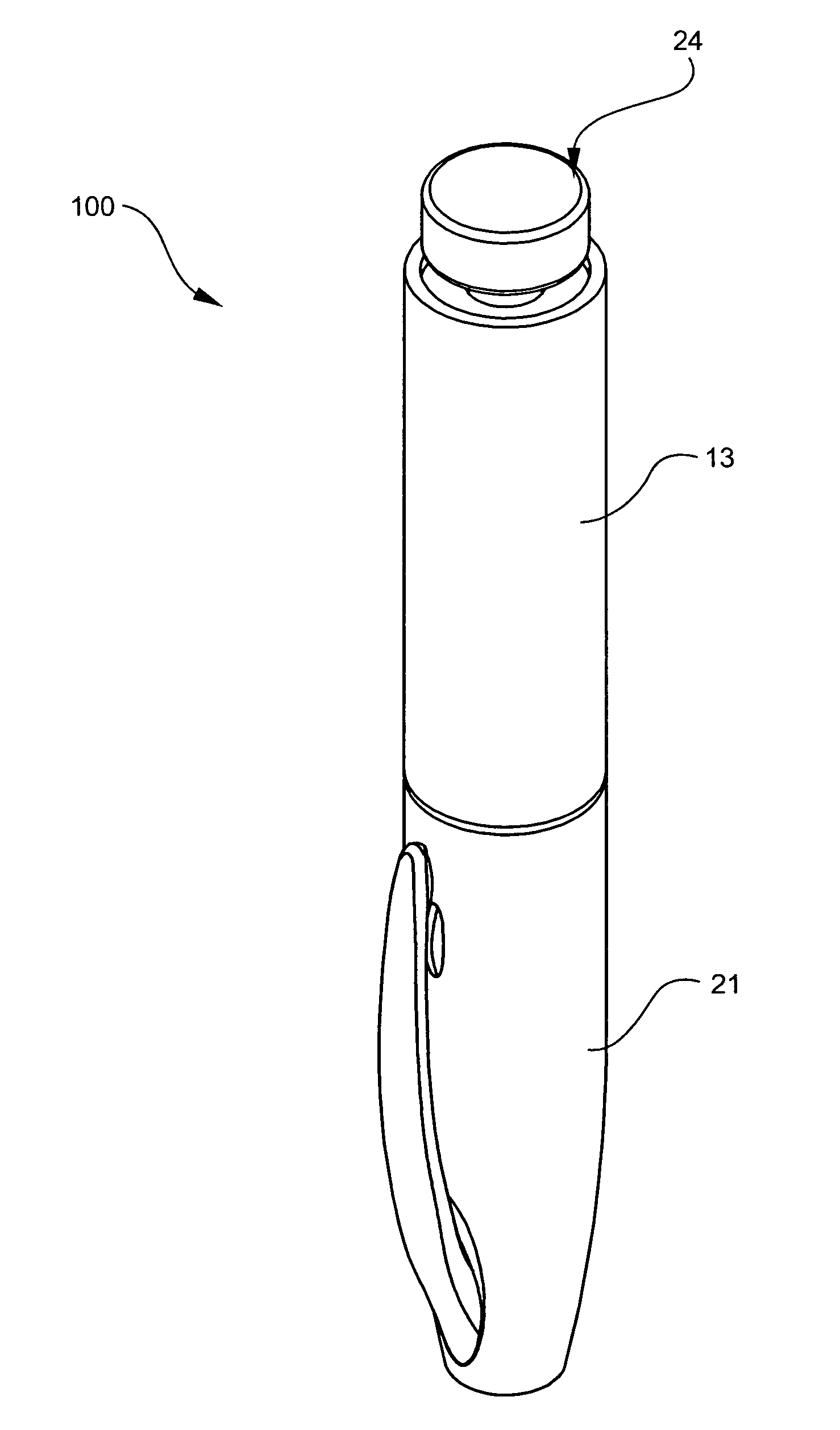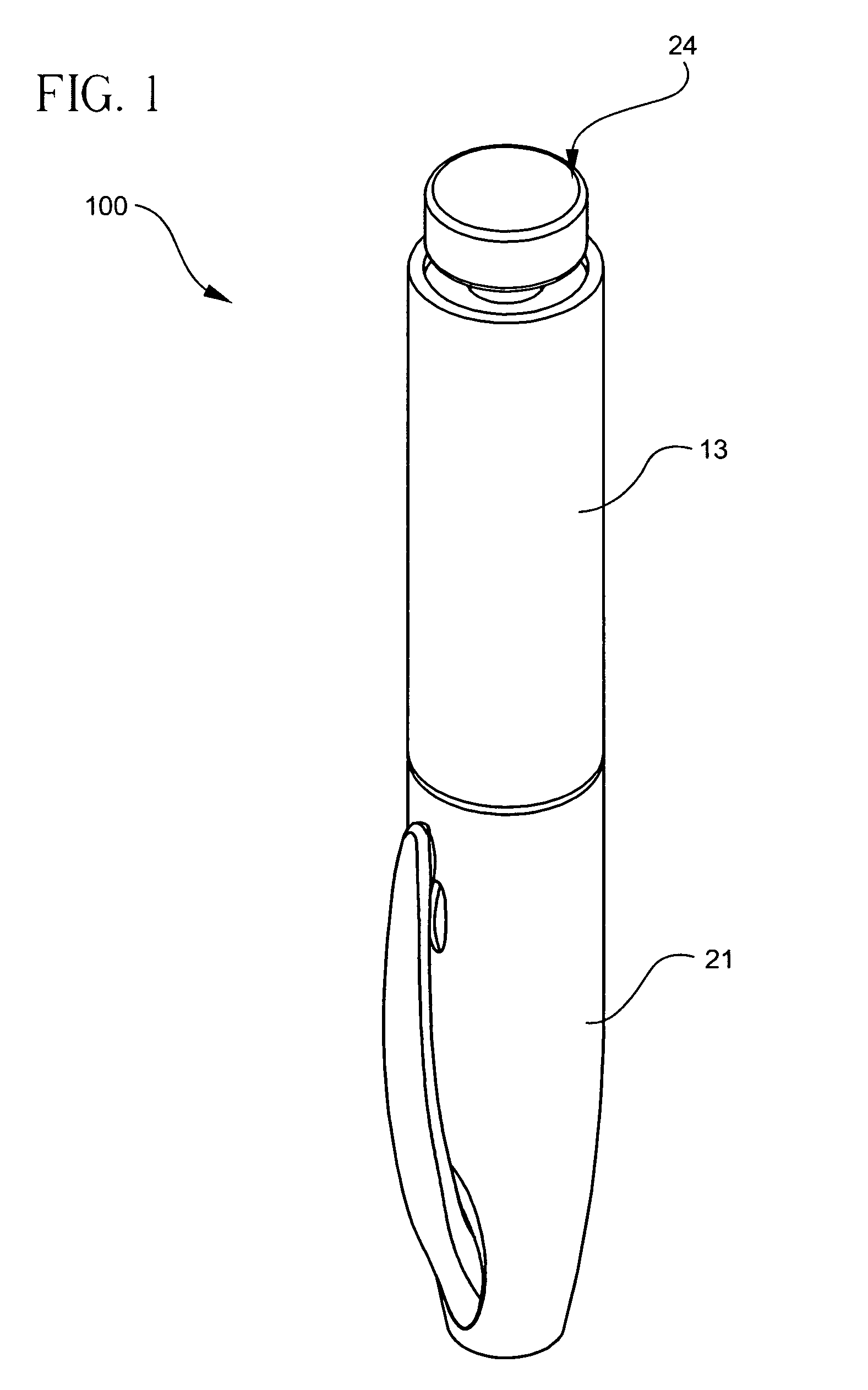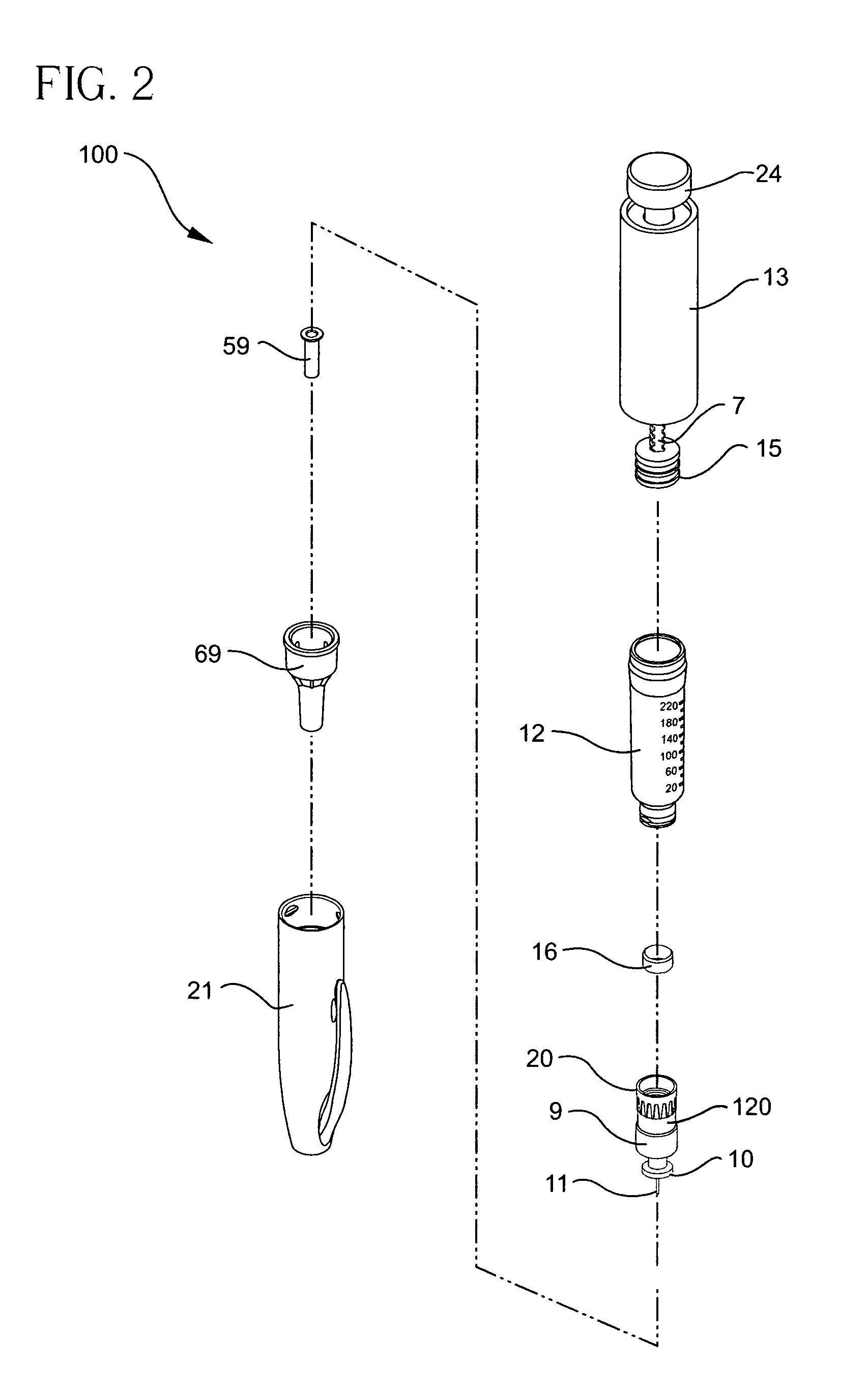Injection device with secondary reservoir
a secondary reservoir and injection device technology, applied in the direction of respirator, infusion syringe, breathing protection, etc., can solve the problems of fluid “jetting”, discomfort for patients or self-injectors, and current typical subcutaneous injection system used for subcutaneous delivery is not believed to be optimal for general us
- Summary
- Abstract
- Description
- Claims
- Application Information
AI Technical Summary
Benefits of technology
Problems solved by technology
Method used
Image
Examples
Embodiment Construction
[0036] Pen injector devices, such as the exemplary pen injector 100, as shown in FIG. 1, typically comprise a dose knob / button 24, an outer sleeve 13, and a cap 21. The dose knob / button 24 allows a user to set the dosage of medication to be injected. The outer sleeve 13 is gripped by the user when injecting medication. The cap 21 is used by the user to securely hold the pen injector device 100 in a shirt pocket, purse or other suitable location.
[0037]FIG. 2 is an exploded view of an exemplary pen injector device shown in FIG. 1. The dose knob / button 24 has a dual purpose and is used to both set the dosage of the medication to be injected and used to inject the dosed medicament via the lead screw 7 and stopper 15 through the medicament cartridge 12 attached to the invention through the reservoir housing 20. In standard pen injector devices the dosing and delivery mechanisms are all found within the outer sleeve 13 and is not described in greater detail here as they are understood by...
PUM
 Login to View More
Login to View More Abstract
Description
Claims
Application Information
 Login to View More
Login to View More - R&D
- Intellectual Property
- Life Sciences
- Materials
- Tech Scout
- Unparalleled Data Quality
- Higher Quality Content
- 60% Fewer Hallucinations
Browse by: Latest US Patents, China's latest patents, Technical Efficacy Thesaurus, Application Domain, Technology Topic, Popular Technical Reports.
© 2025 PatSnap. All rights reserved.Legal|Privacy policy|Modern Slavery Act Transparency Statement|Sitemap|About US| Contact US: help@patsnap.com



